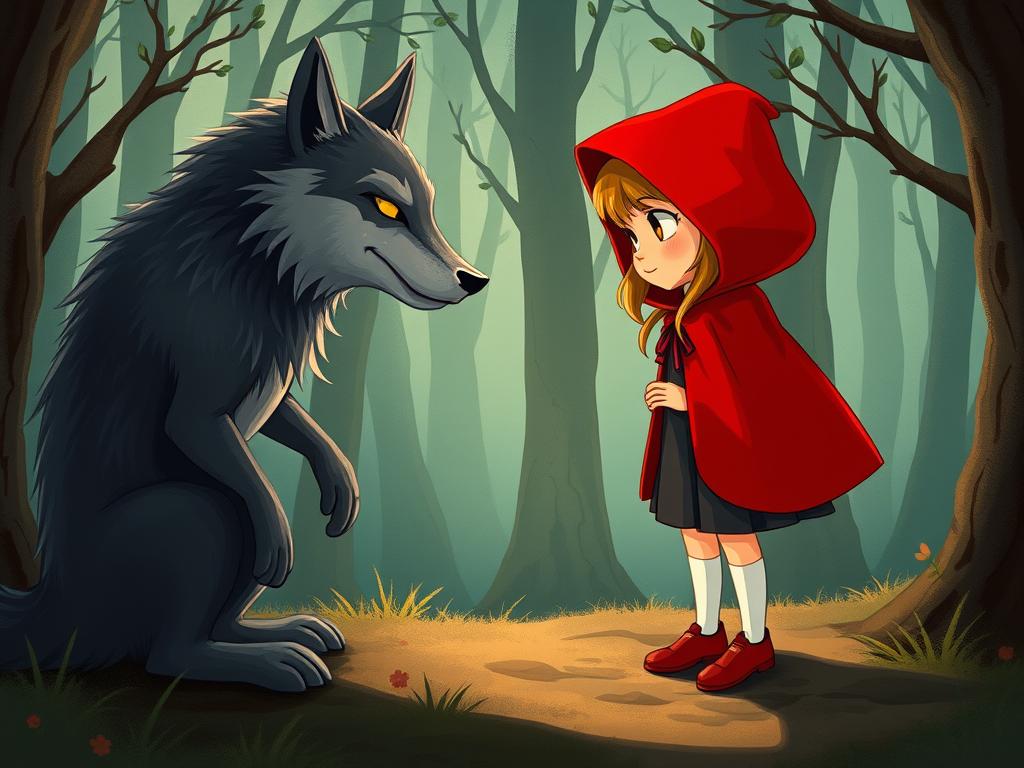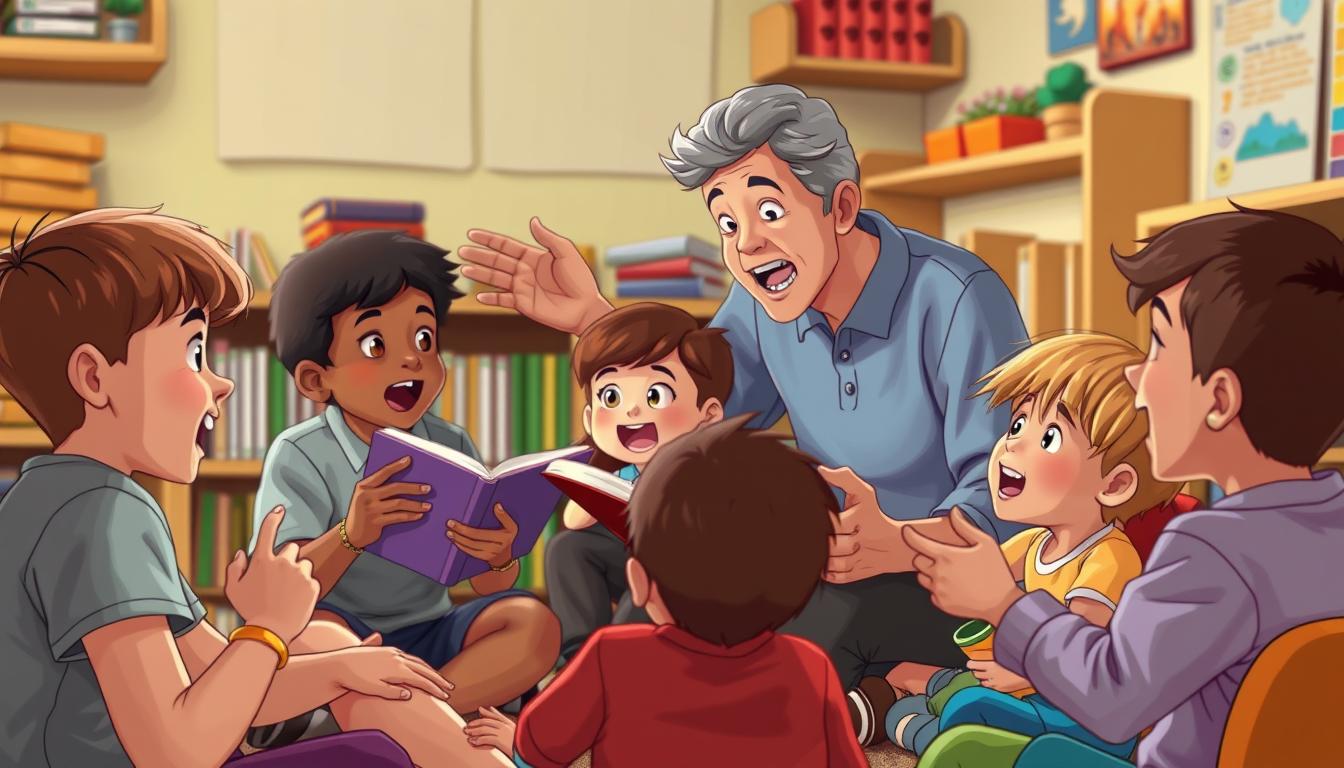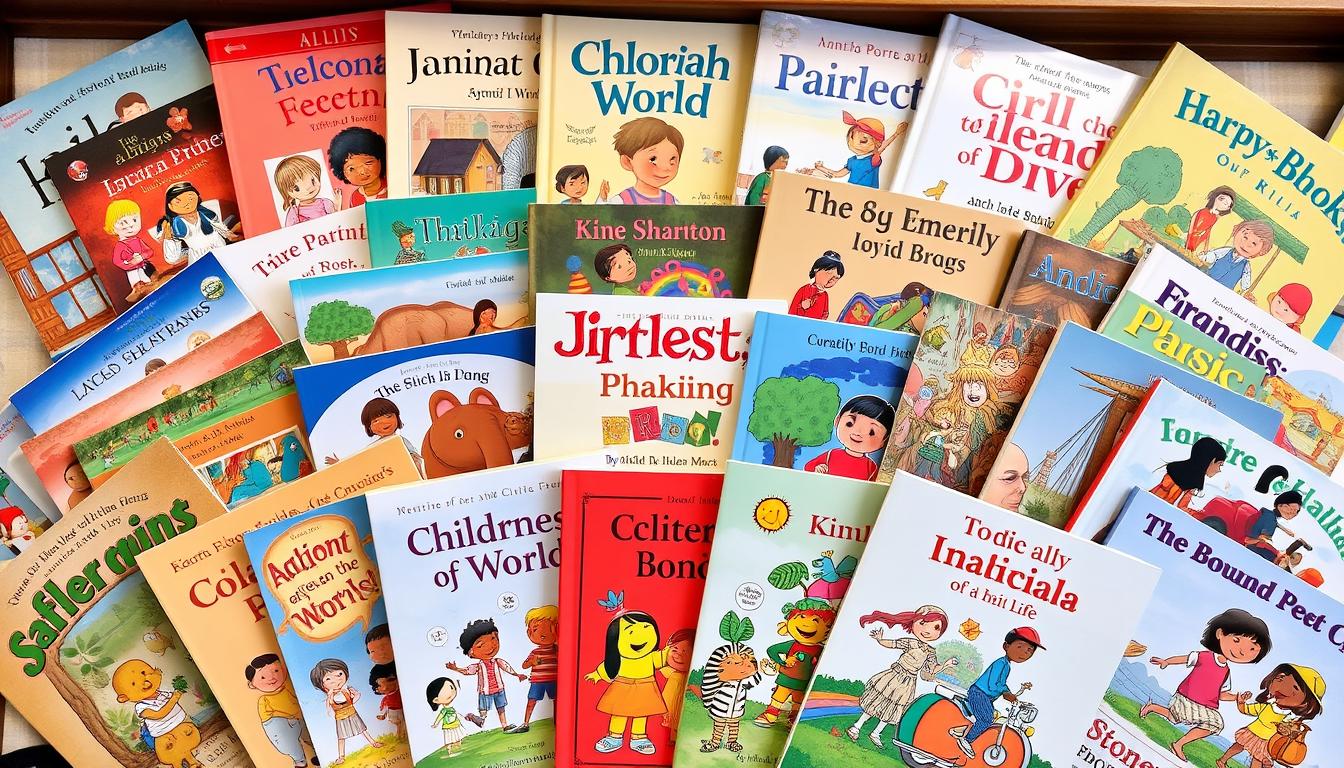The Magic of Children's Story Tales: Timeless Lessons and Imagination
The Magic of Children's Story Tales: Timeless Lessons and Imagination
Children's story tales have captivated young minds for generations, weaving enchanting narratives that transport readers to magical realms while imparting valuable life lessons. These timeless stories serve as more than mere entertainment—they're powerful tools for **moral development**, cognitive growth, and emotional intelligence. From the cautionary wisdom of Little Red Riding Hood to the perseverance celebrated in The Ugly Duckling, these tales create a foundation for understanding the world through **symbolic storytelling** that resonates across cultures and generations.
The Importance of Classic Story Structures in Children's Tales

Classic fairy tales follow time-tested story structures that resonate with children
The enduring appeal of children's story tales lies in their adherence to classic narrative structures that have proven effective across centuries. These frameworks provide children with familiar patterns that help them navigate complex emotions and situations in a safe, imaginative context.
The Hero's Journey in Children's Stories
Many beloved children's tales follow the **hero's journey** structure, where protagonists leave their comfort zone, face challenges, and return transformed. This pattern helps children understand that growth often requires facing difficulties. In stories like "Jack and the Beanstalk," young readers witness how courage and resourcefulness can overcome seemingly insurmountable obstacles.
Moral Dilemmas and Ethical Lessons
Children's story tales frequently present **moral dilemmas** that encourage critical thinking about right and wrong. When the Three Little Pigs make different choices about building their homes, children learn about the value of hard work and planning. These ethical frameworks provide children with mental models for navigating their own choices.
Symbolic Elements and Archetypes
The use of **symbolic storytelling** through recurring archetypes—the wise mentor, the trickster, the innocent hero—creates a rich tapestry of meaning that children intuitively understand. These universal character types help young readers recognize and interpret similar patterns in their own lives, building emotional intelligence and social awareness.
Analysis of 3 Iconic Children's Story Tales
Little Red Riding Hood

This timeless tale has captivated children for centuries with its blend of adventure and caution. The story of a young girl's encounter with a deceptive wolf continues to resonate because it addresses fundamental childhood experiences: independence, trust, and the potential dangers of the unknown.
- Teaches discernment and the importance of distinguishing between trustworthy and dangerous individuals
- Explores the tension between obedience and curiosity
- Illustrates the value of parental wisdom and following instructions
- Demonstrates how appearances can be deceiving
- Presents consequences for straying from the safe path
The Three Little Pigs

The story of the three little pigs and their encounters with the big bad wolf teaches children about preparation, perseverance, and the rewards of hard work. This tale has endured because it presents these complex life lessons in an accessible, memorable format.
- Highlights the importance of planning and preparation
- Demonstrates that quality and effort yield better results than quick solutions
- Illustrates how perseverance overcomes challenges
- Shows that short-term sacrifice leads to long-term security
- Presents the concept of progressive improvement through trial and error
The Ugly Duckling

Hans Christian Andersen's tale of a misfit bird who discovers his true identity resonates deeply with children's experiences of feeling different or out of place. The story's message of self-acceptance and transformation continues to provide comfort and inspiration.
- Explores themes of identity and self-discovery
- Addresses the pain of exclusion and bullying
- Celebrates patience and personal growth over time
- Illustrates that differences can be strengths
- Offers hope that belonging and acceptance await everyone
Practical Tips for Creating Original Children's Story Tales

Creating your own children's story tales can be a rewarding experience that strengthens your bond with children while fostering their creativity and love of reading. Whether you're a parent, educator, or storyteller, these practical guidelines will help you craft engaging original stories that resonate with young audiences.
Developing Compelling Characters
Character Archetypes That Resonate
Children connect with characters who reflect their experiences and emotions. Consider these proven archetypes when developing your story's cast:
- The curious explorer who asks questions and seeks adventure
- The reluctant hero who discovers inner strength
- The wise guide who offers help and wisdom
- The loyal friend who provides support and companionship
- The trickster who creates complications but may teach lessons
Making Characters Relatable
The most memorable characters have both strengths and flaws that make them three-dimensional. Give your characters:
- Age-appropriate challenges that your audience will recognize
- Distinct personality traits that drive their actions
- Clear motivations that explain their choices
- Growth potential that allows for meaningful development
- Unique voices that reflect their individual perspectives
Creating Symbolic Settings

Settings in children's stories do more than provide a backdrop—they create atmosphere, reinforce themes, and often function as characters themselves. Effective settings in children's story tales often carry symbolic significance that enhances the narrative.
Classic Settings with Symbolic Meaning
- The dark forest – represents the unknown and challenges to overcome
- The cozy cottage – symbolizes safety, comfort, and home
- The high tower – suggests isolation and the need for connection
- The magical garden – represents growth, transformation, and possibility
- The winding path – symbolizes life's journey and choices
Creating Immersive Environments
When developing your setting, engage multiple senses to create a vivid experience:
- Include sensory details that bring the environment to life
- Create weather patterns that reflect the emotional tone
- Establish clear boundaries that define the story's world
- Include special objects that hold significance
- Consider how the setting changes throughout the story
Crafting Age-Appropriate Conflict
Conflict drives stories forward and provides opportunities for character growth, but must be calibrated to suit your audience's developmental stage. **Symbolic storytelling** allows you to address complex issues in ways children can process safely.
For Ages 3-5
- Focus on simple problems with clear solutions
- Address everyday challenges like sharing or trying new things
- Use gentle obstacles rather than frightening villains
- Ensure quick resolution and emotional reassurance
- Include adult helpers who provide guidance
For Ages 6-8
- Introduce more complex problems with multiple steps
- Include mild peril that creates excitement
- Explore interpersonal conflicts like friendship challenges
- Allow characters to solve problems more independently
- Incorporate moral dilemmas with nuanced choices
For Ages 9-12
- Develop layered conflicts with external and internal dimensions
- Address deeper fears and more significant challenges
- Explore identity questions and personal growth
- Include meaningful consequences for choices
- Allow for ambiguity in some resolutions
Effective Storytelling Techniques for Children's Tales

The way a story is told can be as important as the story itself. Effective storytelling techniques enhance engagement, comprehension, and enjoyment for young listeners and readers. These approaches help bring children's story tales to life and create memorable experiences.
Rhythm and Repetition
Children naturally respond to rhythmic patterns and repetitive elements in stories. These techniques not only make tales more engaging but also support language development and memory.
- Use repeated phrases that children can anticipate and join in with
- Create rhythmic language that makes the story flow musically
- Incorporate counting or sequential patterns that build anticipation
- Include call-and-response elements that invite participation
- Develop refrains that appear throughout the narrative
Visual Storytelling
Whether through illustrations in books or descriptive language in oral storytelling, visual elements help children connect with narrative and understand complex concepts.
- Use vivid descriptive language that creates mental images
- Incorporate color symbolism to reinforce emotional tones
- Create distinctive visual traits for characters
- Use size and scale to emphasize importance
- Include visual metaphors that children can understand
Interactive Elements
Engaging children as active participants rather than passive listeners deepens their connection to the story and enhances comprehension.
- Include questions that prompt prediction or reflection
- Create movement opportunities related to the story
- Add sound effects that children can help create
- Incorporate decision points where children can suggest what happens next
- Design sensory experiences that connect to the narrative
The Educational Value of Children's Story Tales

Beyond entertainment, children's story tales serve as powerful educational tools that support development across multiple domains. Understanding these benefits can help parents and educators select and create stories that maximize learning opportunities.
Cognitive Development
Stories challenge children's thinking and help them develop essential cognitive skills that transfer to academic and real-world contexts.
- Enhances sequential thinking through narrative structure
- Develops cause-and-effect understanding through plot consequences
- Builds vocabulary through exposure to rich language
- Strengthens memory through recall of story elements
- Encourages prediction skills as children anticipate what happens next
Emotional Intelligence
Through the experiences of characters, children develop emotional awareness and learn strategies for managing their own feelings.
- Provides emotional vocabulary to name and understand feelings
- Offers models for emotional regulation through character examples
- Creates safe distance to explore difficult emotions
- Develops empathy by experiencing different perspectives
- Demonstrates emotional cause and effect through narrative
Social Understanding
Stories help children navigate the complex social world by illustrating relationships, conflicts, and resolutions.
- Illustrates friendship dynamics and relationship skills
- Demonstrates conflict resolution strategies
- Explores diverse perspectives and cultural viewpoints
- Models prosocial behaviors like sharing and helping
- Addresses challenging social situations like exclusion or bullying
The Cultural Significance of Children's Story Tales

Children's story tales serve as cultural repositories, preserving traditions, values, and wisdom across generations. These narratives connect children to their heritage while also introducing them to the rich diversity of human experience around the world.
Preserving Cultural Heritage
Traditional tales carry the essence of cultural identity, helping children understand their roots and the values that have shaped their communities.
- Transmits cultural values through narrative
- Preserves traditional knowledge and wisdom
- Connects children to their ancestral heritage
- Maintains linguistic traditions and expressions
- Celebrates cultural heroes and important historical figures
Building Cultural Bridges
Stories from diverse traditions help children develop appreciation for different perspectives and recognize our shared humanity.
- Introduces diverse worldviews and cultural perspectives
- Highlights universal themes that connect across cultures
- Develops cultural sensitivity and respect
- Challenges stereotypes through authentic representation
- Creates windows and mirrors for children to see themselves and others
Evolving Traditions
As society changes, children's stories adapt to reflect contemporary values while maintaining connections to traditional narratives.
- Updates traditional tales to reflect modern sensibilities
- Addresses contemporary issues through familiar story frameworks
- Incorporates diverse representation in classic narrative structures
- Balances preservation with innovation
- Creates new classics that speak to today's children
Embracing the Magic of Children's Story Tales

The enduring power of children's story tales lies in their unique ability to entertain while educating, to delight while developing character, and to connect generations through shared narrative experiences. Whether reading classic fairy tales or creating original stories, these magical narratives provide children with essential tools for understanding themselves and their world.
By appreciating the artful structure of traditional tales and thoughtfully crafting new stories, parents and educators can harness the transformative potential of **symbolic storytelling**. Through carefully chosen characters, settings, and conflicts, children's stories create safe spaces for exploring complex emotions and challenging situations.
As we continue to share these precious tales with the children in our lives, we not only nurture their **moral development** and imagination but also strengthen the bonds that connect us. In a world of rapid technological change, the simple magic of a well-told story remains one of our most powerful tools for nurturing the hearts and minds of the next generation.
Free Story Structure Template
Create your own children's story with our easy-to-follow template. Perfect for parents and educators looking to craft engaging tales with meaningful lessons.
Download Free Template| Element | Traditional Folktales | Modern Children's Stories |
| Pacing | Swift progression with minimal description; events happen in quick succession | More detailed pacing with emphasis on character feelings and scene descriptions |
| Vocabulary | Formal language with archaic terms; often uses repetition and formulaic phrases | Age-appropriate contemporary language; avoids complex terms unless explained |
| Messaging | Direct moral lessons often stated explicitly; consequences can be severe | Nuanced ethical situations; focuses on empathy and understanding perspectives |
| Character Development | Characters often represent archetypes with limited growth | Characters show psychological depth and meaningful transformation |
| Conflict Resolution | Often resolved through magic, divine intervention, or punishment | Typically resolved through communication, compromise, and personal growth |
Classic Fairy Tales Collection
Access our curated collection of 20 classic fairy tales, beautifully formatted for reading aloud or quiet reading time. Each story includes discussion questions to explore with your child.
Get Your Free CollectionCharacter Development Worksheet
Create memorable characters for your children's stories with our step-by-step worksheet. Includes prompts for personality traits, motivations, and growth arcs.
Download WorksheetStory Discussion Guide
Maximize the educational value of story time with our discussion guide. Includes age-appropriate questions that promote critical thinking and emotional intelligence.
Download Discussion GuideComplete Storytelling Resource Kit
Everything you need to create and share magical stories with the children in your life. Includes templates, character worksheets, setting guides, and discussion questions.
Get Your Free Kit